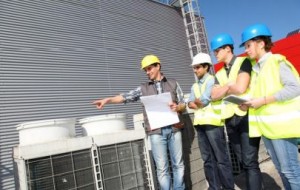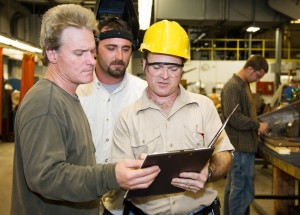The health and safety issue of combustible dusts reached its apex back in 2009, when the Occupational Safety & Health Administration (OSHA) released their National Emphasis Program NEP on combustible dust. The NEP was released in order to focus attention on the agency’s efforts to mitigate dust-related explosions. Part of the NEP standard 1910.307(b) posted stipulations about the use of electric industrial vacuums in areas where combustible dust accumulates. This standard is defined by NFPA 70 from the National Electrical Code.
An explosion proof industrial vacuum / dust ignition proof vacuum or a combustible dust safe pneumatic industrial vacuum should meet requirements for use in the OSHA dust classifications of: Class 1, Group D and Class II, Groups E, F, and G.
For more information on industrial vacuum filters, including how to select the right media for the material you are picking up, please contact us or visit the DEMARCO Vacuum Accessories page.
|
Summary of Class I, II, III Hazardous Locations* |
|||
|
CLASSES |
GROUPS |
DIVISIONS |
|
|
1 |
2 |
||
| I Gases, vapors, and liquids (Art. 501) | A: Acetylene B: Hydrogen, etc. C: Ether, etc. D: Hydrocarbons, fuels, solvents, etc. |
Normally explosive and hazardous | Not normally present in an explosive concentration (but may accidentally exist) |
| II Dusts (Art. 502) | E: Metal dusts (conductive,*and explosive) F: Carbon dusts (some are conductive,* and all are explosive) G: Flour, starch, grain, combustible plastic or chemical dust (explosive) |
Ignitable quantities of dust normally are or may be in suspension, or conductive dust may be present | Dust not normally suspended in an ignitable concentration (but may accidentally exist). Dust layers are present. |
| III Fibers and flyings (Art. 503) | Textiles, wood-working, etc. (easily ignitable, but not likely to be explosive) | Handled or used in manufacturing | Stored or handled in storage (exclusive of manufacturing) |
These industrial vacuums should include vacuum features such as motor, switches, filters, and inner chambers that are designed specifically for use in combustible dust applications or situations. In addition, an explosion proof vacuum should have a graduated filtration system that traps and keeps the combustible dust particles from moving out of the equipment back into the air. A HEPA filter is most often used in order to clean the exhaust of the vacuum. High quality HEPA filters provide a strong defense for prevention of small dust particles escaping back out into the air.
For companies that must regularly handle the removal of combustible dust, an explosion proof industrial vacuum is a smart investment. Before purchasing, however, research is a must – ensuring the right machine is matched to each specific situation. When matched properly, the right machine can be matched to the needs of the company in question, ensuring proper plant safety.
 One of the worst-case scenarios for a business owner is an industrial accident causing property damage or personal injury to workers. One possibility could be an industrial accident caused by combustible dust, or tiny airborne particulates that can suddenly explode under the particular circumstances.
One of the worst-case scenarios for a business owner is an industrial accident causing property damage or personal injury to workers. One possibility could be an industrial accident caused by combustible dust, or tiny airborne particulates that can suddenly explode under the particular circumstances. An explosion that injured a worker in a British Columbia sawmill in July could have had much more devastating results if it weren’t for the facility’s diligence in cleaning combustible dust, the mill owner said.
An explosion that injured a worker in a British Columbia sawmill in July could have had much more devastating results if it weren’t for the facility’s diligence in cleaning combustible dust, the mill owner said.